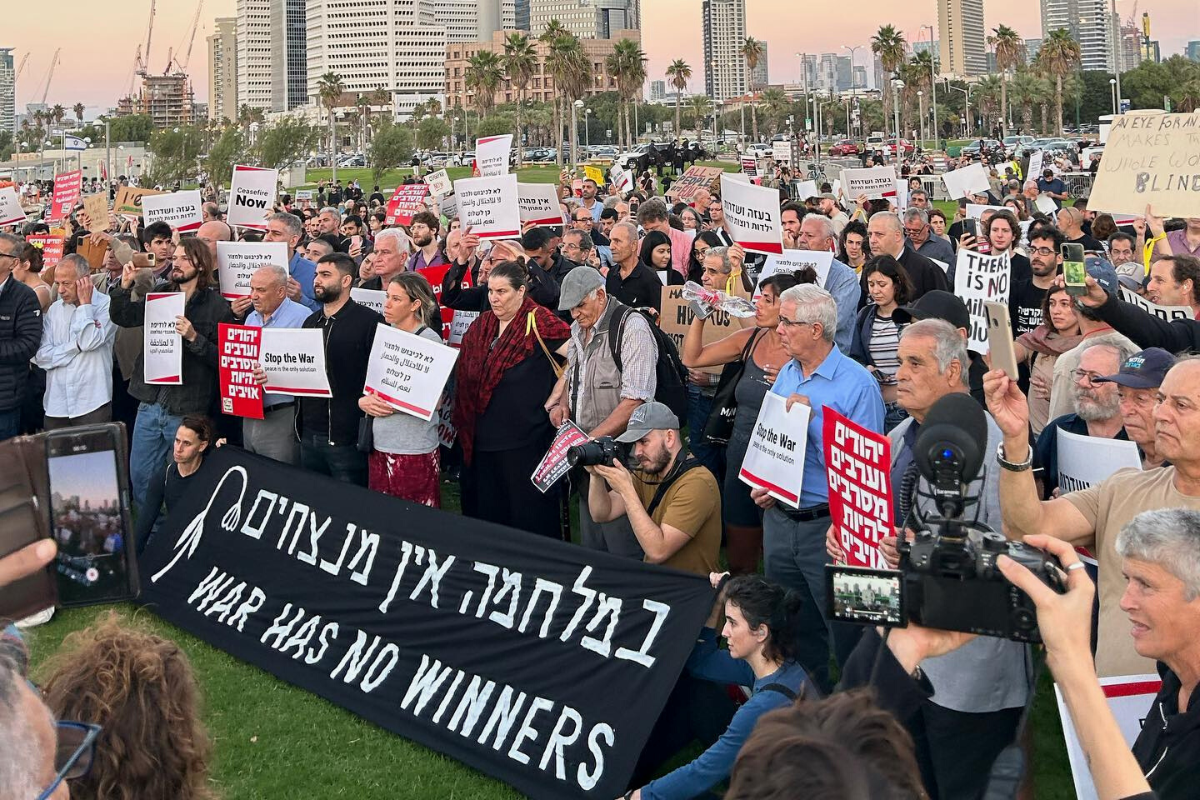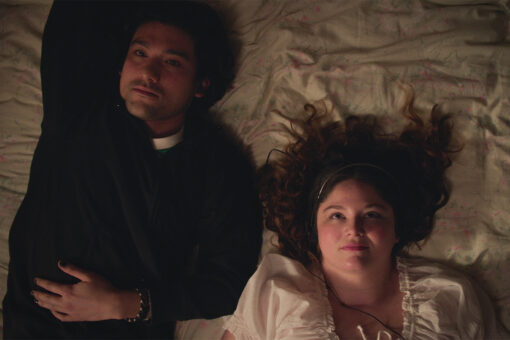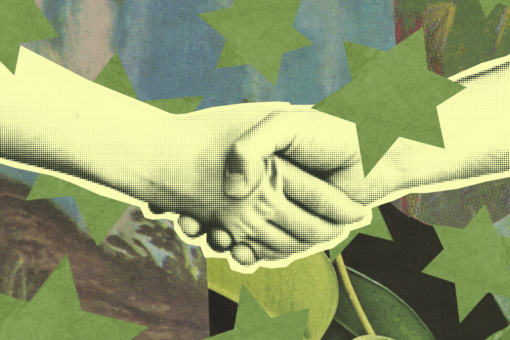Standing Together’s message is simple: There is another way.
The largest Jewish-Arab grassroots movement in Israel has been working for almost a decade to bring together Jewish-Israeli and Arab-Israeli communities, with the vision of a just and equal society that treats every person with dignity and “chooses peace, justice and independence for Israelis and Palestinians – Jews and Arabs.”
Many Americans are learning about Standing Together for the first time this year — their work has been highlighted in The New York Times and their English Instagram account went from 200 followers on Oct. 6 to more than 59,000 followers today — but the Israelis and Palestinians involved with the movement’s on the ground organizing have been heavily invested in their work for a very long time.
“We are building a shared home for all those who refuse hatred and choose empathy,” Standing Together’s website states. “We won’t erase our differences, but rather believe in a true partnership based on shared interests… We envision a society that serves all of us… A society in which we all enjoy real security, adequate housing, quality education, good healthcare, a liveable climate, a decent salary and the ability to age with dignity. Such a society is possible — we’re already building it.”
Heli Mishael, the solidarity network manager for Standing Together, shares what a day in the life of her work looks like.
Nov. 13, 2023
Tel Aviv, Israel
9 a.m.
Another morning dealing with a crisis. I get on the Zoom call with my colleagues. Uri says the place our conference was supposed to take place tonight has canceled on us. As much as they support us, they cannot host us after threats from the Jerusalem municipality to cut funding for their facilities. Raafat says he knows a few places and will make quick calls. I will help with updating the 300 people who signed up with new location details. I take another sip from my decaf coffee that is supposed to help me reduce my migraines. I’m not sure that now is the time to deal with my own health. I need caffeine.
11 a.m.
Raafat finds an organization that is willing to host us. We decide not to release a press statement about the cancellation. It will only boost the right-wing organization whose mission is to cancel us and send a message to the Israeli public that our activities are unwanted. Right now, our mission is not to shout about how persecuted we are, but to show the public that Jewish and Palestinian citizens are in solidarity together. Instead of the calls for revenge, instead of targeting Jewish grief and anger at Palestinian citizens, there is another way: a way to work together, so that the violence won’t erupt within Israel too, as it did in the military operation in Gaza in May 2021. We do not need more lynching on our streets now.
1 p.m.
Michal makes us lunch at the Tel Aviv office. Michal is the organizer of our climate chapter, but now, during the war, she takes care of the influx of volunteers. She is a people’s person and she takes care of all of us. We get a photo from the Haifa office, where staff and volunteers have returned to work in the Standing Together local community center after threats of violence were neutralized. They have a popcorn machine there, but we have Michal. It’s bittersweet how the most horrifying days bring us closer to each other and remind us how we are in fact a family.
2 p.m.
Manar calls me. She found flowers for 4 shekels each in Baqa al-Gharbiya and plans to organize a visit to the Hillel Yaffe hospital in Hadera with the local solidarity group she leads. I tell her that most groups hand out 100 flowers to medical personnel and patients in their solidarity visits to hospitals where Jews and Palestinians work together. She says in that case she will buy 200 flowers. That’s Manar.
6 p.m.
The volunteer photographer calls me from the wrong address in Jerusalem. I forgot to update her about the new location. Thankfully it’s not very far. She will make it.
7 p.m.
I return to the square in Tel Aviv where we started the biggest movement in Israel’s history against facism in January this year. But this time, instead of chanting for democracy, I meet devastated families sitting in small groups around the square, with pictures and stories of their loved ones now captive in Gaza.
I come to meet the families of the hostages as part of a Jewish-Arab group. We walk from one corner to the other, meet mothers, fathers, grandchildren and grandparents who share with us how we, a group of Arabs and Jews, can join and help their cause of bringing back their loved ones from Hamas’ hands.
A journalist from the Arabic national broadcast reports from the square and interviews some of our group’s Palestinian leaders. A young man runs by and shouts at us “Death to Arabs!” Samir, the reporter, asks me: “Where was this young man when I was amongst the first reporters to reach the Gaza border on October the 7th? Where was he when I filmed the atrocities? Where was he when Hamas militants shot in my direction? Where was he when I documented the truth so that the world would see what happened here?” I look into Samir’s sad eyes and have no words. We all experience trauma here. It’s not reserved for only Jews or only for Palestinians.
10 p.m.
Our team’s comms channel is filled with photos from our gathering in Jerusalem. More than 400 people showed up! I see photos of people smiling, holding signs, talking to each other and I’m filled with hope. This work is hard, tiring and lacks instant gratification, but particularly in times like these, it’s really the only thing that keeps me sane. The undeniable truth is that there are two peoples here: Jewish Israelis and Palestinians. None of us have anywhere to go, and we simply need to figure out a way to be in this together. So that’s exactly what we’re doing.



